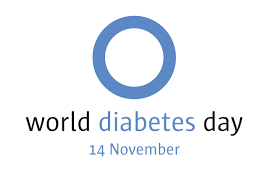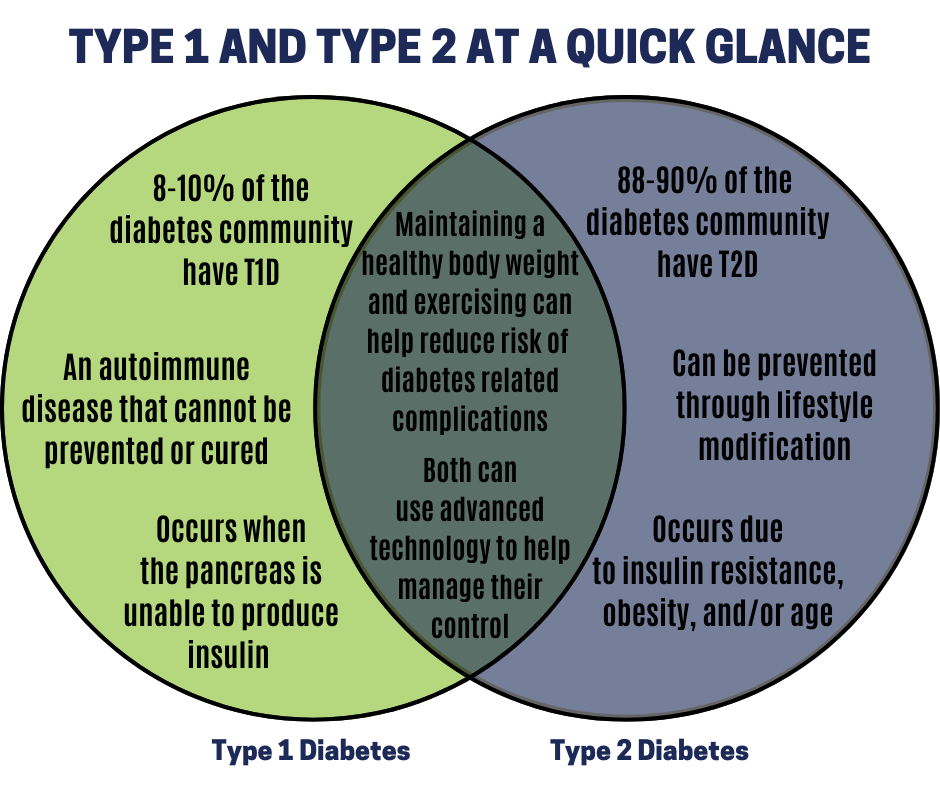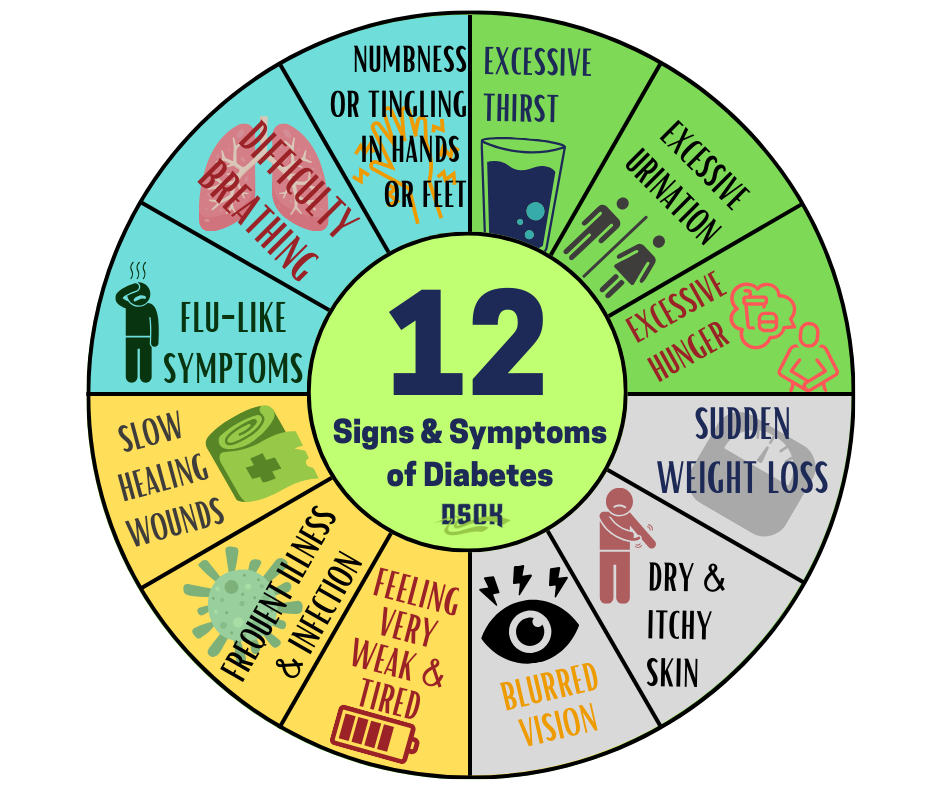
World Diabetes Day is a global occasion on which people unite to raise awareness about diabetes.
Everyone Needs To Know..
- Diabetes is the most expensive chronic condition in our nation. $1 out of every $4 in US health care costs is spent on caring for people with diabetes. The cost of diabetes to our nation is $327 BILLION annually. This includes $237 billion on direct medical costs and another $90 billion on reduced productivity. (CDC, 2017)
- More than 37 million people in the United States have diabetes, and 96 million US adults—over a third—have prediabetes, and more than 8 in 10 of them don’t know they have it. Worldwide, over 420 million people have some form of diabetes. It is a global epidemic.
- In Oklahoma, approximately 541,888 people or 14.3% of the adult population, have diabetes.
- November is Diabetes Awareness Month
- Over the last 20 years, the number of adults diagnosed with diabetes has more than doubled.
- World Diabetes Day “..,was created in 1991 by the International Diabetes Federation and the World Health Organization in response to the quickly rising health concerns caused by uncontrolled diabetes. World Diabetes Day became an official United Nations Day in 2006 and is marked every year on November 14th, the birthday of Sir Frederick Banting, who co-discovered insulin along with Charles Best in 1922.”… by multiple sources.
- “On December 20, 2006, the United Nations passed the “World Diabetes Day” resolution. It was on this day that the blue circle was officially recognized worldwide as the symbol of diabetes. Introduced by the International Diabetes Federation, the circle creation was meant to represent inclusivity. Therefore, the blue circle represents all types of diabetes. The symbol is to give diabetes a common identity, support existing efforts to raise awareness of diabetes and place the diabetes epidemic in the public spotlight.” … by multiple sources
- The goal for most people with diabetes is to maintain an A1C of <7.0%
Long Term Complications..
Too often we hear people say, “It’s just diabetes,” as if it is no big deal. Unfortunately, uncontrolled diabetes can lead to devastating complications and early death when not managed properly. Because of related complications, diabetes is the most costly chronic illness.
All people with diabetes are at greater risk for:
- dangerous swings in glucose levels that can lead to seizures, hospitalization or even death
- slow healing wounds
- cardiovascular disease: heart attacks, heart failure and strokes
- nerve damage: amputations, impotence, delayed stomach emptying, gastroparesis, heart arrhythmias and many more
- eye disease: cataracts, glaucoma, macular degeneration and blindness
- periodontal disease or gum disease causing tooth loss
- kidney failure
People with diabetes have a higher incidence of:
- All forms of infections
- Alzheimer ’s disease and dementia
- Autoimmune diseases: celiac disease, rheumatoid arthritis, cystic fibrosis
- Certain forms of cancer
- Connective tissue disorders: frozen shoulder, carpal tunnel, many others
- Depression, anxiety and other mental illnesses
- Eating disorders
- Osteoporosis
- Sleep apnea
- Other chronic and life threatening problems
Youth with diabetes and their families are often filled with:
- Fear, frustration, anger, anxiety, shame and sadness
- Feelings of isolation and hopelessness
- Worry over the long term cost of diabetes supplies and insulin
The Different Type of Diabetes
Type 1 Diabetes (T1D):
- 8-10% of people with diabetes have type 1 diabetes.
- T1D is an autoimmune process where the body’s immune system destroys insulin making cells of the pancreas (beta cells).
- T1D is sometimes referred to as "juvenile diabetes," but 50% of those diagnosed are over the age of 21.
- Diet and lifestyle issues do NOT contribute to developing T1D.
- Currently, there is no known prevention or cure for T1D.
- Most people with T1D give insulin based on the total carbohydrates eaten, either through daily injections or use of an insulin pump worn continuously.
Type 2 Diabetes (T2D):
- 85-90% of people with diabetes have type 2 diabetes.
- T2D is a result of “insulin resistance.”
- The best prevention for type 2 diabetes is to reach/maintain an ideal body weight and to be physically active (at least 30 minutes each day).
- The greatest risks for developing type 2 diabetes includes:
- Genetics: If your family members have T2D, you are at a higher risk of developing the disease
- Obesity: Being overweight significantly increases insulin resistance and the risk of developing T2D
- Sedentary Lifestyle: Long/extended periods of sitting or lying down and lack of physical activity increase the risk of developing T2D

Insulin resistance in both type 1 and type 2 can lead to hypertension (high blood pressure), hyperlipidemia (high cholesterol), PCOS (polycystic ovarian syndrome) and more.
40% of people with type 2 diabetes require insulin injections. This does NOT mean the person has “converted” to type 1 diabetes. It means their insulin making cells are no longer making enough insulin for their needs
Gestational Diabetes:
- Women should be tested for gestational diabetes at 24-28 weeks of pregnancy
- Up to 10% of all pregnancies in the US are affected by gestational diabetes
- Diet and exercise are first line therapy
- If left untreated, gestational diabetes can cause serious and life threatening problems for both mother and infant.
- Diabetes in pregnancy increases the risk of stillbirth, preterm birth, birth defects, large birth weight, breathing difficulties and severe hypoglycemia (low blood sugar) at birth
- Pregnant women with diabetes are at a higher risk of high blood pressure, preeclampsia and damage to eyes and kidneys
- Gestational diabetes goes away after the birth of the baby
- Mothers with gestational diabetes and babies both have an increased risk of developing T2D later in life
Signs and Symptoms of Diabetes

Could you be at risk for developing type 2 diabetes? Take the test HERE
Need Help Affording Insulin?
If you or someone you know has difficulty paying for insulin, there are coupons that can significantly reduce out of pocket costs, regardless of whether you have health insurance or not.
NovoNordisk: NovoLog, NovoLog® Mix 70/30, Levemir, Tresiba (degludec), Fiasp, Novolin N, Novolin R, Novolin 70/30, Insulin Aspart
- Pay $35 for a monthly supply of any combination of Novo Nordisk insulin products, up to 3 vials or 2 packs of pens (up to 35 mL). If you are uninsured or have commercial insurance and want to register via text to receive your MyInsulinRx™ Offer, text ENROLL to 24177 to sign up or visit: MyInsulinRx
Lilly: Humalog, Lispro, Basaglar (glargine), Humulin R, Humulin N, Humulin 70/30, Humulin R U-500
- Anyone who uses Lilly insulin and needs help with diabetes care can call the Lilly Diabetes Solution Center. A live representative will have a confidential conversation and present solutions that are based on each person’s circumstances. The helpline is available Monday through Friday. Call 1-833-808-1234
Sanofi: Apidra, Lantus (glargine), Toujeo, Soliqua
Sanofi Patient Connection or call 1-888-847-4877, Mon-Fri, 9AM-8PM ET

For more information or to contribute to this fund please call (405) 843-4386 or, send your donation to:
Diabetes Solutions-OK, Inc.
3333 NW 63rd St., Suite 100
Oklahoma City, OK 73116
(405) 843-4386
